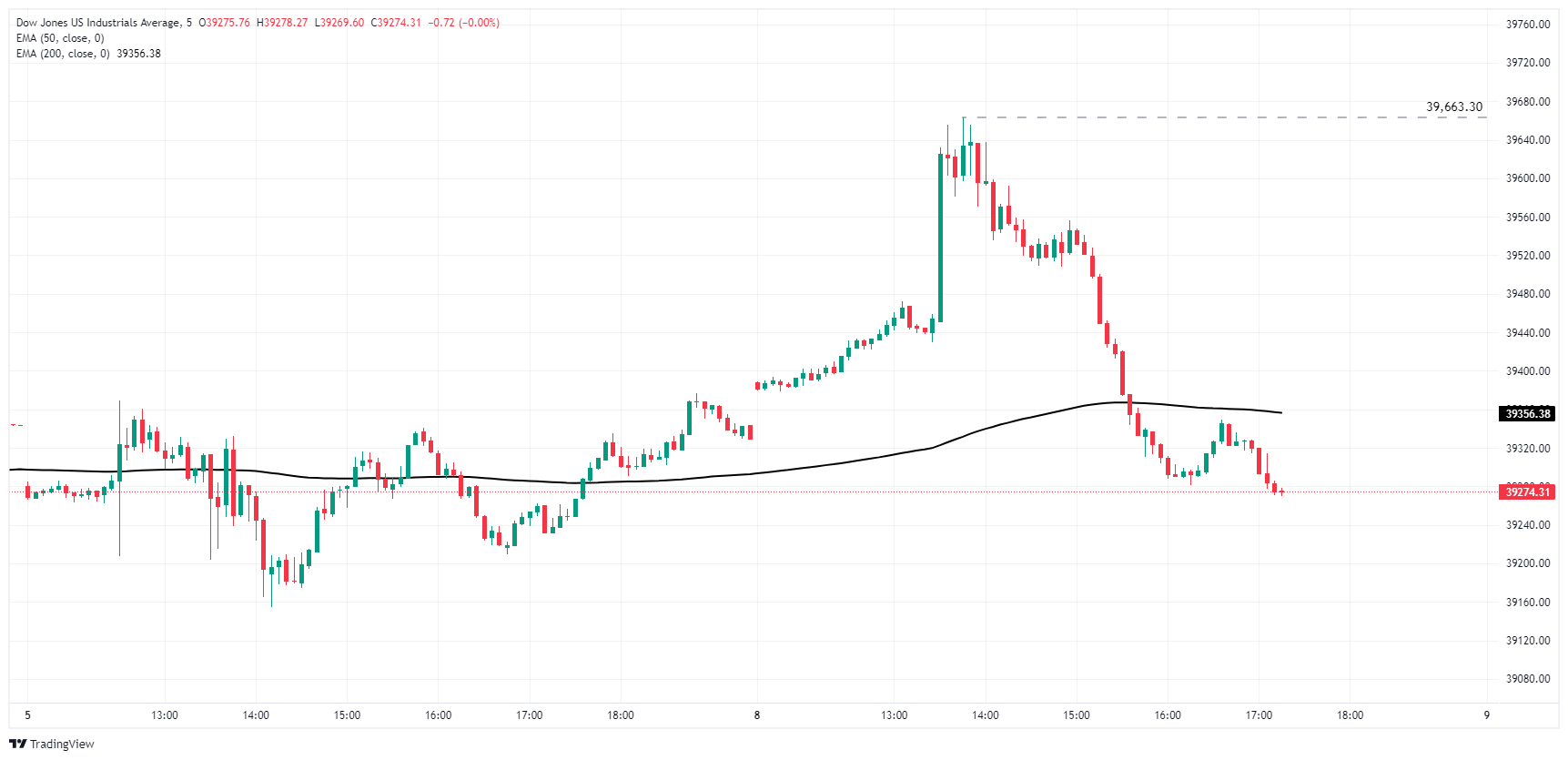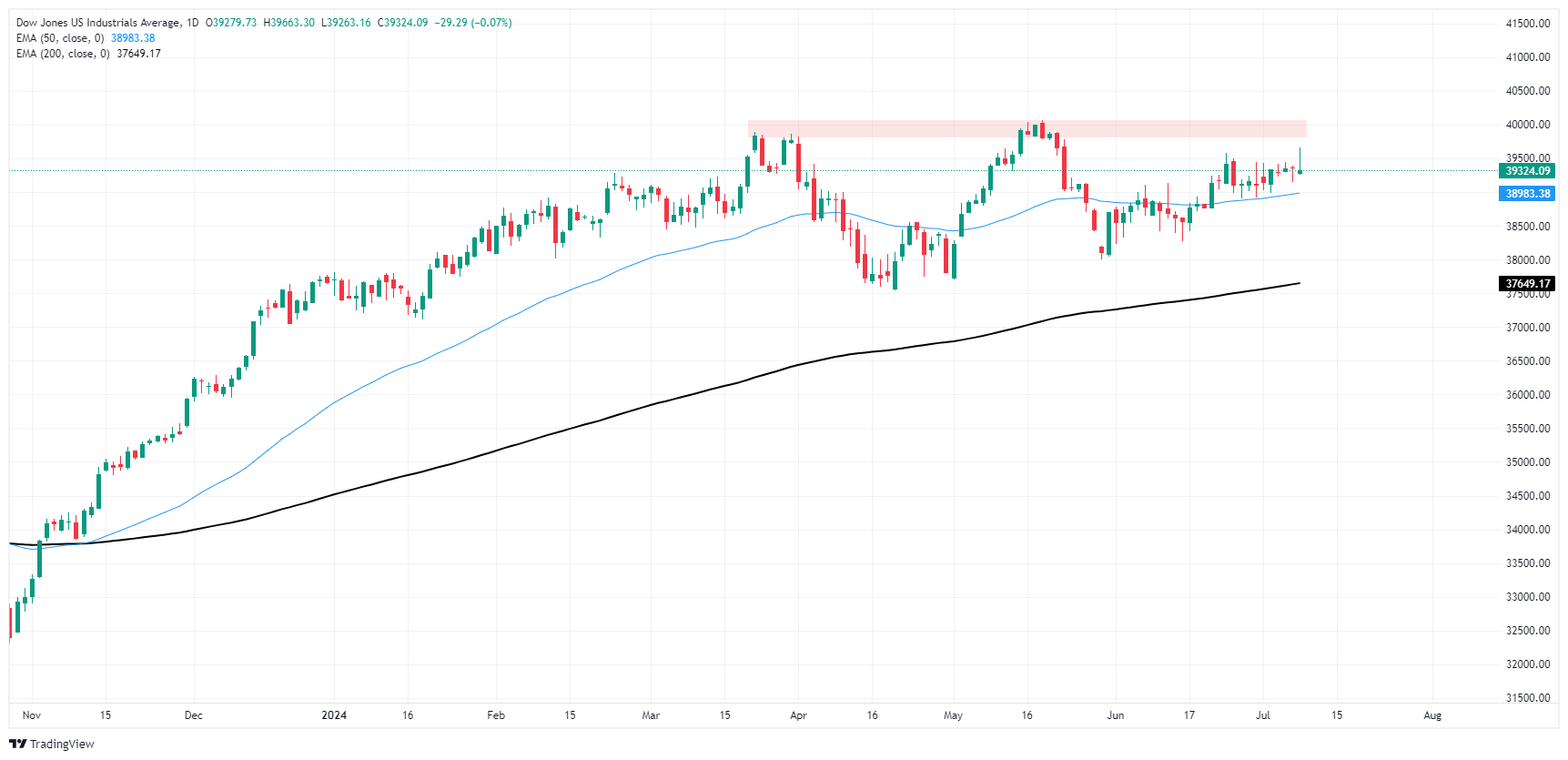- The Dow Jones hit new highs early in the session today before turning lower.
- The new trading week starts with a pause after Friday’s NFP.
- US consumer and wholesale inflation figures are due out this week.
He Dow Jones Industrial Average (DJIA) The dollar fluctuated on Monday, briefly testing new highs and breaking out of Friday’s tight range before turning lower for the new trading week. Federal Reserve (Fed) Chairman Jerome Powell delivers the first of a two-day monetary policy report to the US Congress on Tuesday, with key US inflation figures scheduled for the second half of the trading week.
Fed Chair Jerome Powell will deliver the first half of his monetary policy report to the Senate Banking Committee on Tuesday, followed by the same presentation to the House Financial Services Committee on Wednesday. U.S. Consumer Price Index (CPI) inflation is scheduled for Thursday, and U.S. Producer Price Index (PPI) wholesale inflation is due on Friday.
US inflation figures will be the key data point this week as investors look for signs of rate cuts from the Fed. Despite broader market hopes for a rate cut, Fed officials have continued to wait for further evidence that inflation will fall back to the Fed’s 2% annual target. According to the CME’s FedWatch tool, rate traders are pricing in a nearly 80% chance of at least a quarter-point cut in the federal funds rate on September 18, a little over ten weeks from now.
Waiting for this week’s inflation data will be tense. Core CPI for the year ended June is forecast to remain stable at 3.4% y/y, while core PPI inflation for the same period is expected to rise to 2.5% y/y from 2.3% previously, as inflationary pressures remain elevated at the producer-supplier level.
Dow Jones News
The Dow Jones Industrial Average was mixed on Monday, with about half of the board’s constituent stocks in the green for the day, but broad declines in major goods producers kept prices on the main index subdued. Nike Inc. (NKE) fell -2.25% to $73.73 per share, extending to a new 52-week low and facing further declines as the shoe-making giant sees growth issues for the year ahead as the footwear giant’s market share is cannibalized by smaller, more strategic competitors.
Intel Corp. (INTC) soared on Monday, rising 5.3% to $33.72 per share after a note from analysts at Melius Research suggested that NVIDIA Corp. (NVDA) competitors such as Intel and Advanced Micro Devices Inc. (AMD) could significantly catch up in the AI space with current sector giant NVIDIA.
Dow Jones Technical Outlook
The Dow Jones Industrial Average (DJIA) rallied in early trading on Monday, hitting a fresh seven-week high of 39,663.30 before a sharp drop erased the day’s gains. The Dow fell to an intraday low just south of 39,275.00. The main stock index remains down about one-tenth of a percent on Monday.
The Dow Jones has been hovering in familiar chart territory just above the 50-day exponential moving average (EMA) at 38,983.20 since recovering from the late May low near 38,000.00. Despite holding firmly on the upside, upside momentum remains limited, with Dow bidders so far failing to develop the momentum needed to push bids back above all-time highs set above the main 40,000.00 price zone.
5 minute chart of the Dow Jones
Dow Jones daily chart
The Dow Jones FAQs
The Dow Jones Industrial Average, one of the world’s oldest stock market indexes, is made up of the 30 most actively traded stocks in the United States. The index is weighted by price rather than capitalization. It is calculated by adding up the prices of the component securities and dividing by a factor, currently 0.152. The index was founded by Charles Dow, also founder of the Wall Street Journal. In recent years it has been criticized for not being sufficiently representative, as it only tracks 30 companies, unlike broader indexes such as the S&P 500.
There are many factors that drive the Dow Jones Industrial Average (DJIA). The main one is the aggregate performance of the companies that comprise it, as revealed in quarterly corporate earnings reports. US and global macroeconomic data also contribute, as they influence investor confidence. The level of interest rates, set by the Federal Reserve (Fed), also influences the DJIA, as it affects the cost of credit, on which many companies rely heavily. Therefore, inflation can be a determining factor, as well as other parameters that influence the decisions of the Federal Reserve.
Dow Theory is a method for identifying the major trend of the stock market developed by Charles Dow. A key step is to compare the direction of the Dow Jones Industrial Average (DJIA) and the Dow Jones Transportation Average (DJTA) and only follow trends where both move in the same direction. Volume is a confirmation criterion. The theory uses elements of peak-trough analysis. Dow Theory posits three phases of a trend: accumulation, when smart money starts buying or selling; public participation, when the general public joins the trend; and distribution, when smart money leaves the trend.
There are several ways to trade the DJIA. One is to use ETFs that allow investors to trade the DJIA as a single security, rather than having to buy shares of all 30 companies that comprise it. A prominent example is the SPDR Dow Jones Industrial Average ETF (DIA). Futures contracts on the DJIA allow traders to speculate on the future value of the index, and options provide the right, but not the obligation, to buy or sell the index at a predetermined price in the future. Mutual funds allow investors to purchase a portion of a diversified portfolio of DJIA securities, providing exposure to the overall index.
Source: Fx Street
I am Joshua Winder, a senior-level journalist and editor at World Stock Market. I specialize in covering news related to the stock market and economic trends. With more than 8 years of experience in this field, I have become an expert in financial reporting.







